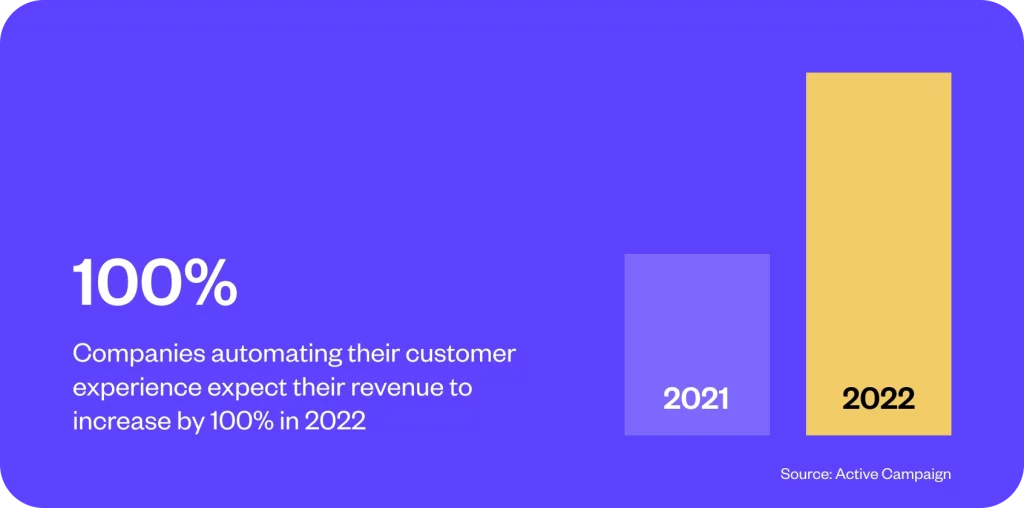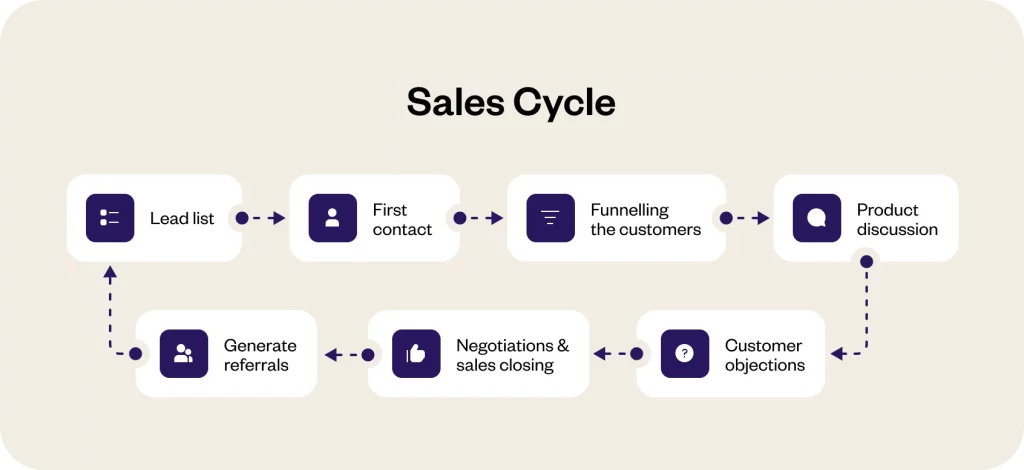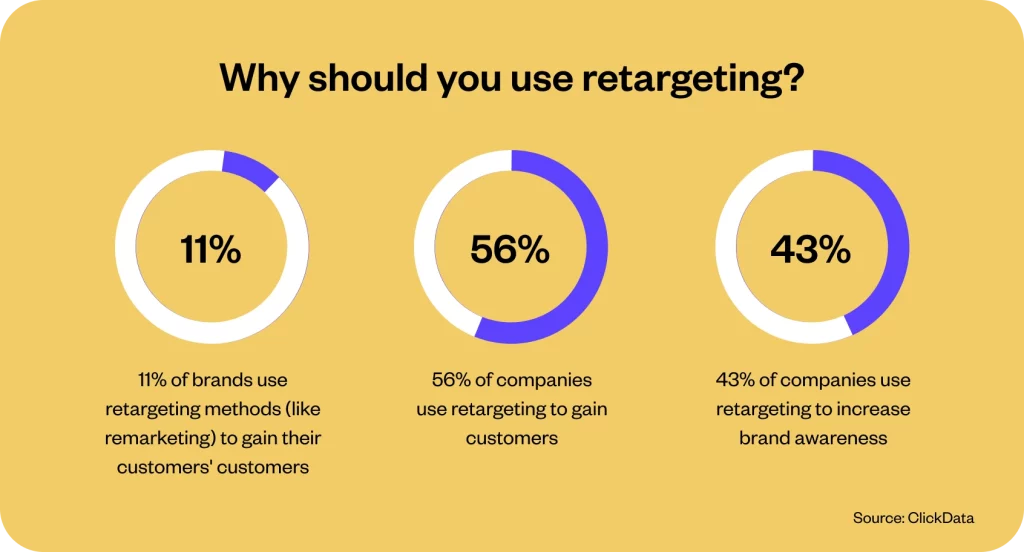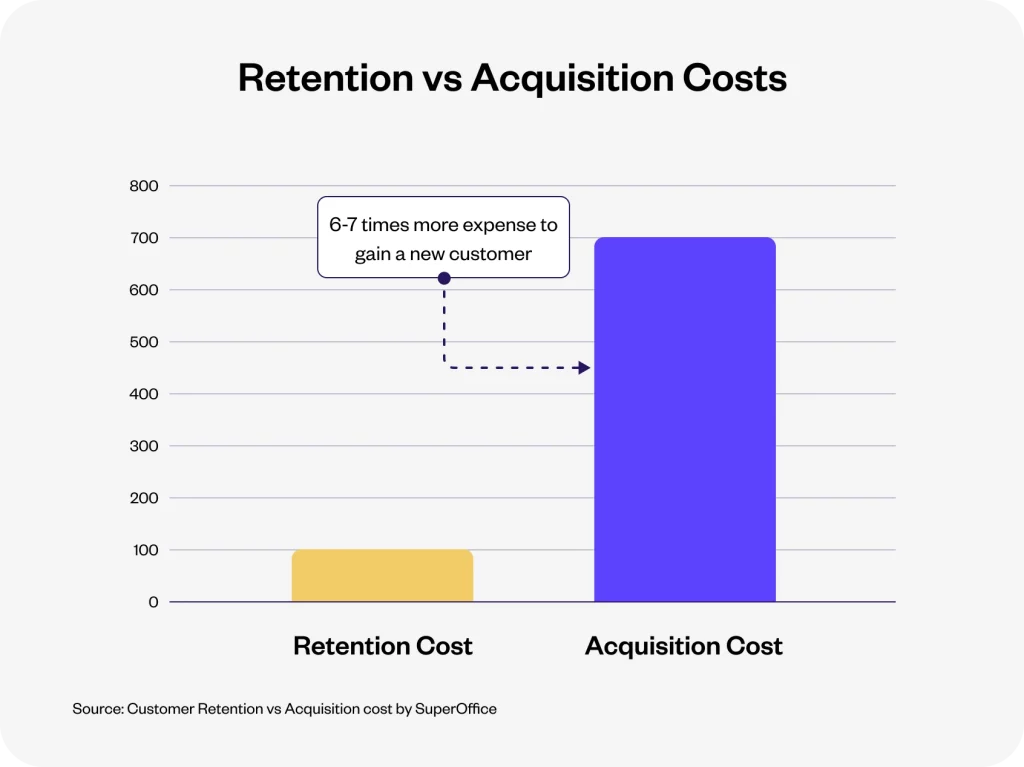Each company has its own sales cycle that depends upon its industry, target market and customer base. However, if there is one thing that every business has in common, it’s the intention of closing deals faster.
In this article we’ll look at how AI-powered CX automation can cut short your sales cycle so that you can reach more customers in the same amount of time.
What is CX automation?
Customer experience automation (CX automation) entails employing tools that replicate human cognition capability such as problem solving and logical reasoning, to reduce manual labour in support processes. It involves identifying repetitive tasks across customer engagement cycles and automating them with the help of tools such as AI-powered chatbots, voice bots and live chat.
We already see multiple applications of CX automation tools in customer support, but they also have a significant impact on the sales processes. A recent study by IT brief says that businesses using customer experience automation reported a 110% increase in new leads and a 94% increase in conversions compared to the previous year.

It also reported that CX automation helped both B2B and B2C businesses achieve 109% average increase in sales effectiveness and 108% increase in engagement rates as compared to emails and other marketing campaigns.
What is the relationship between sales cycle and CX automation?
Sales cycle refers to a repeatable and tactical process followed by the sales teams to convert leads into customers and minimizing time-consuming repetitions falls right in the domain of automation.
So, before jumping onto how CX automation can help you acquire more customers in less time, let’s look at the different stages of the sales cycle that you can cut short with the help of automation.

Step 1:
Finding leads and connecting with them to gather information required for lead scoring.
Step 2:
Qualifying leads based on established metrics to identify if the lead has intent to buy.
Step 3:
Connecting with qualified leads to offer your products and services as a solution to their pain points.
Step 4:
Overcoming objections and sealing the deal by making the ask and presenting the paperwork.
Step 5:
Nurturing the customers even after the deal is closed to foster loyalty.
7 Ways CX automation can cut the time spent on sales
1. Lead generation – Manages inbound queries and identifies lead gen opportunities
Generating quality leads is the first and the most cumbersome step in the sales cycle, if done without a layer of automation. It involves a lot of direct engagement in the form of cold-calls and emails, as well as asking for referrals and requesting people to fill survey forms.
Whereas, lead generation with chatbots is more dynamic and exciting. Conversational bots can greet new customers and ask them questions about their interests and preferences. They record this data in real-time and send the leads directly to your CRM.
2. Automatic lead scoring – Qualifies only the high-quality leads
Spending time on unqualified leads is a nightmare for every sales rep. It’s important that leads are scored on the basis of different metrics like relevance, budget, demographics and other product-specific factors to establish which prospects are worth your time and which aren’t.
Chatbots automate the lead scoring process and only qualify those leads that have the minimum risk of churning. Once the leads are qualified, chatbots can also move them further down the sales funnel by answering any questions they may have about the product and sending them tailored offers.
3. Behavioral retargeting – Nudges customers to complete the purchase sooner
Conversational bots leverage NLP and machine learning to gain insights into customer behavior as they interact with them. This enables chatbots to retarget prospective customers who are stuck in the purchasing funnel, thus creating new opportunities without any extra human effort.
The bot re-engages with these customers to address any concerns that they may have and encourages them to complete the purchase with limited time offers and discounts. This can speed up sales by 15-20%, while also increasing customer engagement.

4. Response time optimization – Reduces customer churn due to long wait times
Time is money when it comes to responding to leads. Research indicates that you are more likely to turn a lead into a customer if you revert to them within the first five minutes.
With conversational AI tools, you can stay available to your customers 24/7 and instantly respond to their queries. Chatbots can also handle multiple customers simultaneously. This enables you to expand the reach of your business without straining your operational budget.
5. Conversational commerce – Leverages the power of messenger apps to make faster sales
A report by Kepios shows that there are more than 4.62 billion social media users around the world today. When nearly half of the earth’s population is actively-using social media, it only makes sense for businesses to be readily available on these platforms. This gives rise to conversational commerce.
Conversational commerce is the process of conducting business over messaging apps like WhatsApp, Facebook Messenger, Instagram and more. It enables companies to meet customers where they are and drive four times more conversions.
6. In-chat payment integrations – Reduces the need for cross-channel navigation
Cart abandonments can be quite frustrating. A lot of times customers get distracted or have certain doubts that stop them from completing their purchase. It is at times like these that chatbots come in handy.
By integrating payment gateways with your chatbot you can make the checkout process quite straightforward and enable faster conversions. Customers would no longer have to navigate between channels to make a purchase. They would be able to get personalized recommendations, answers to their queries and directly buy products from the chat interface.
7. After sales customer service – Boosts customer retention and repeat business
Acquiring new customers is important but so is nurturing the current ones. After-sales support plays a crucial role in boosting customer satisfaction and retention. It makes sure that customers feel valued and become loyal brand advocates.

RPA and intelligent virtual assistants can be used to assist customers throughout their journey, even after the sale has been closed. You can start by using automated texts to thank your customers for making a purchase and share order details and tracking information. You can also follow up with them using outbound voice bots to gather feedback and offer another sale.
Conclusion
Sales representatives are under constant pressure to bring in new business. However, when most of their time goes into tedious manual processes, they can often feel demotivated and stuck in an endless cycle of wasting valuable time that could be better spent converting and nurturing leads.
CX automation offers a solution to this common problem by automating at least a third of all time-consuming, repetitive sales tasks like lead management, taking queries and collecting feedback. This then enables sales reps to focus on reaching more customers and nurturing leads, leading to higher conversions.
Get in touch with our experts to learn more about how customer experience automation can make your sales processes more effective.























